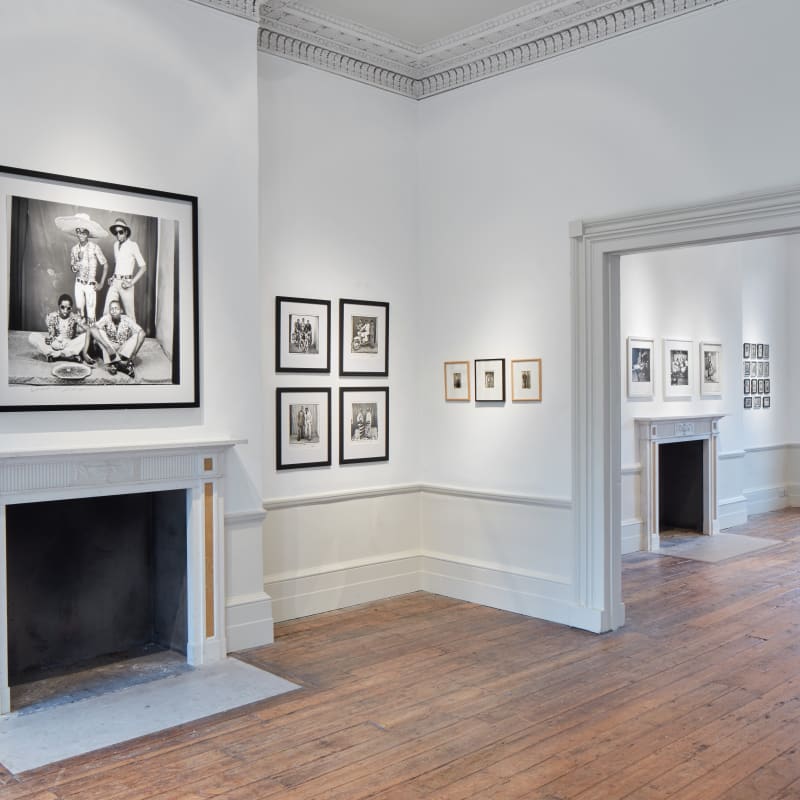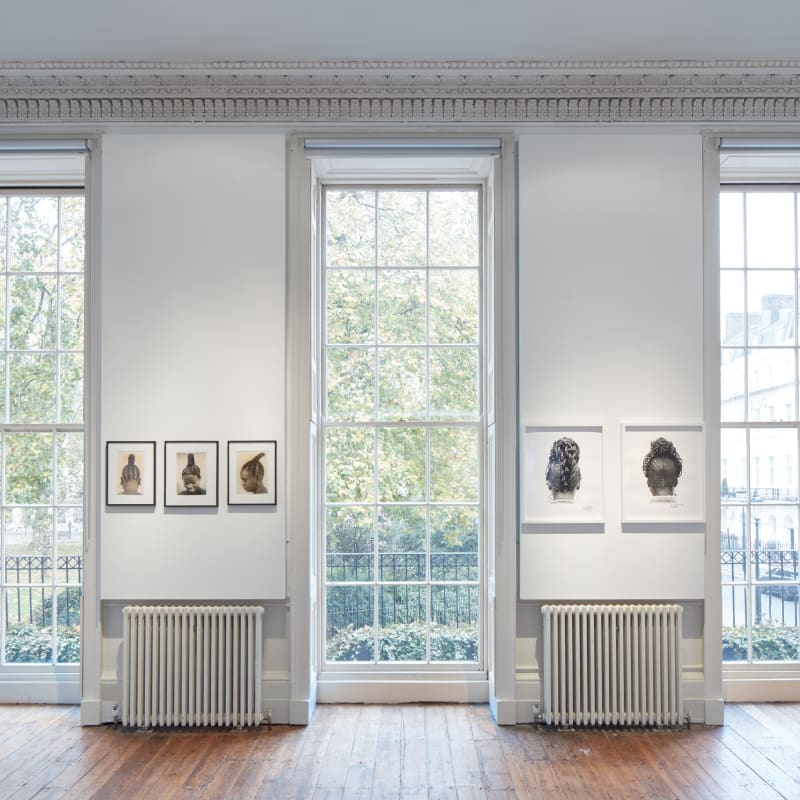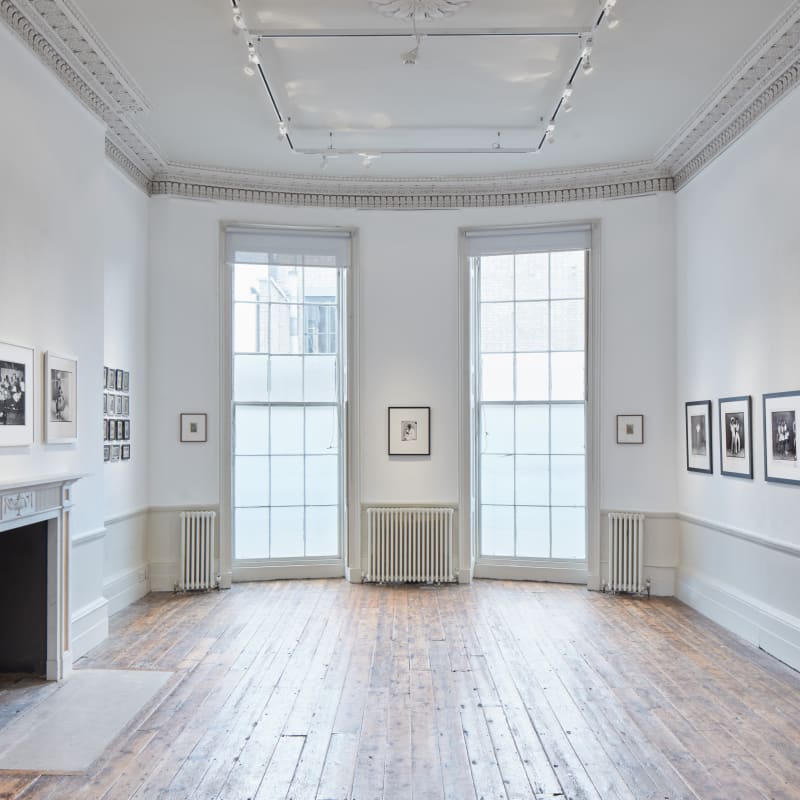The photography scene in Africa begun with the arrival of the colonial powers in the late 19th century. Studios were set up and run by Europeans as successful businesses, mainly focusing on images of ‘exotic’ Africa to sell to the outside world. Over time as the Europeans left, their African apprentices took over the equipment and studios and turned the businesses into an art. A golden age can be said to have existed between the 1950s and the 1970s, when many African countries gained independence and a youthful and energetic optimism was in the air. This era came to an end during the tense political climates of the later 1970s, and with the arrival of colour photography. During this time many studios closed, the equipment was sold and the negatives and prints were often lost, destroyed or dispersed.
In the early 1990s, the curator André Magnin arrived in Bamako armed with several anonymous black and white portraits dating from the 1950s. In that part of the world, where information is transmitted by word of mouth, the ‘bush telegraph’ quickly led him to Studio Sidibé. Sidibé sat outside his studio repairing old cameras and when he saw the images, he quickly identified that they were by Seydou Keïta. It was typical of Sidibé’s modest character not to mention that he was also a photographer, but the result of the meeting was that Malick Sidibé and Seydou Keïta were discovered by the outside world. Since then, they have both enjoyed considerable international recognition, multiple exhibitions, and Sidibé was awarded the Golden Lion at the Venice Biennale in 1997. While Sidibé and Keïta are undoubtedly great masters, what is less known is that their studios were in fact only two among hundreds of practitioners who popularised the medium in West Africa. In an attempt to address this imbalance, this exhibition presents Keïta and Sidibé alongside a selection of less recognised photographers from the region, some of whom are being exhibited in the UK for the first time. (Studio 3Z from Congo and Studio Paramount from Lagos.)
I am particularly excited to exhibit work by Mama Casset (1908-1992). In the 1950s and 1960s, his was the leading photography studio in Senegal, famous for his luxurious images of the grand ladies of Dakar. His closely cropped low angle shots pervaded by perfume, rich materials and affected gestures were known across the region and certainly influenced Keïta and Sidibé. Sadly, his studio burnt down in 1984 and destroyed his negatives, so all that remain are the photographs owned by his clients, friends and family.
Jean Depara (1928-1997) shut his Whisekys Depara studio in Kinshasa in 1966 and devoted himself to capturing the city with a particular focus on its nightlife. In the 1960s and 1970s, Kinshasa was vibrant and cosmopolitan, packed with different ethnicities and famous for its intense music scene. This is the era of the great Ali Fraser fight, The Rumble in the Jungle, and Depara thrived in the atmosphere photographing the bars, clubs and colourful characters on the scene. Ambroise Ngayimoko of Studio 3Z was active at the same time, and the joyful and innovative images of young men and women in his studio capture the vibe, while the outfits, props and poses speak of the influence of American music, record covers and magazines. This connection is also evident in the naming of Paramount, one of Lagos’ best known studios in the 1950s. As with Mama Casset, the negatives are lost but we have the original and intimate portraits of the Lagos Bourgeoisie which tell the story of a city in transition. Also of note are the two touching portraits by Keletigui Touré about whom very little is known. There are records of his studio in Dakar and Bamako, and from the portraits it is obvious that he had considerable talent.
It is interesting that there should have been so many studios during this era and that portraiture as a genre, more than any other, inspired the photographers and patrons alike. In African society, hairstyle, style of dress, cloth pattern, jewellery and other props indicated social status and group affiliation as well as individual identity. Further than this, the position of a person’s hand, a certain pose or gesture would also be understood by the audience in the same way that each of J.D Ojeikere’s hairstyles was worn for a certain occasion by a specific person. By bringing together a diverse group of photography studios working in different countries, spanning a period of about 30 years, the hope is that we compare, contrast and enjoy their work in a slightly wider context than usual.




